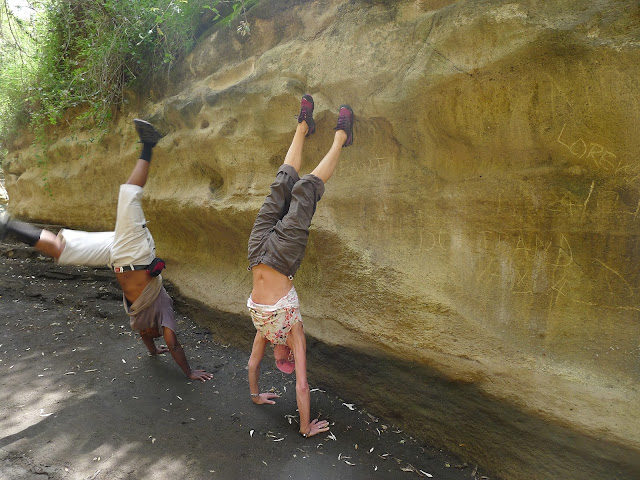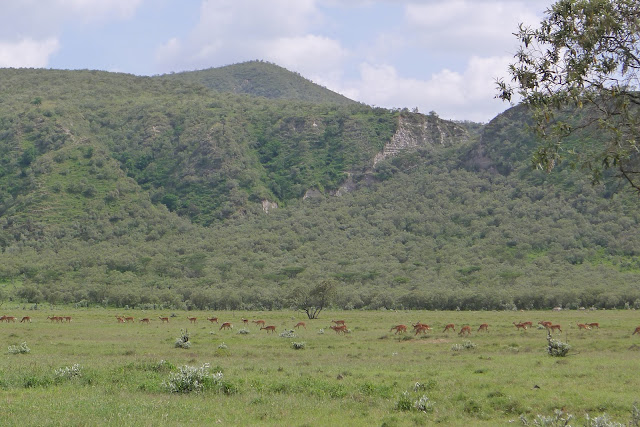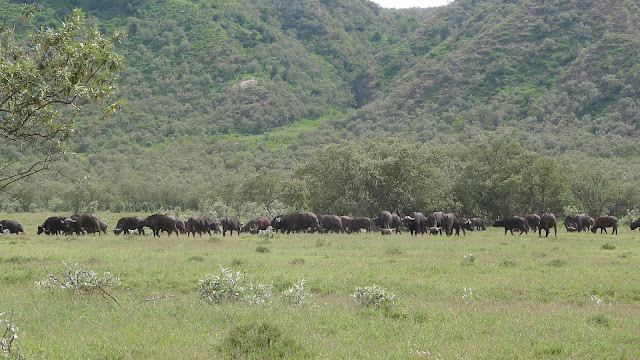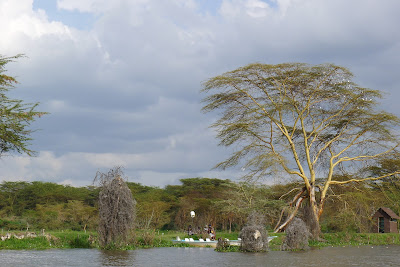13 January 2016
One of the defining attributes of the African Great Lakes Region is extreme contrast and immense diversity. The equatorial rain forests surrounding the Great Lakes transition to the Sahel to the north and the
Savanna to the south. These incredibly biodiverse eco-climatic zones are all
present in a country that is 5/6ths the size of Texas.
For many, “Africa” is conceived of as a single country, as a
concept, as an assemblage of stereotypes. To be sure, many countries and
cultures are stereotyped. Perhaps since many of the countries of Africa are
infrequently visited by Americans – due to distance, political instability,
lack of tourist accommodations, etc. – so little is known about Africa that one
is forced to extrapolate commonly observed images to the entire continent. How
many people do you know who have visited the capital cities of Bangui, Central
African Republic or Niamey, Niger? I personally have no idea what it would be
like to visit or live in these places, but I’m quite certain it would be
dramatically different that Nairobi, Kampala, or Addis Ababa.
Since it’s nearly impossible to give any statement about one’s experience in
Africa without it be invalidated by the realities present in another country on
the continent, I have to constantly remind myself that my experience of “Africa”
is limited to the relatively small area I have visited. That said, here are
some observations from the last few days in Kijabe, Kenya, East Africa.
-
Rochelle, Phillip, and I went on an 11 mile hike - to train for our upcoming attempt to climb Mount Kenya - up ~1500 vertical feet of paths and roads to the rim of the Valley, turning around at the same point I ended my run last week. After loading up a pack with 35 pounds of gear to better simulate the intensity of the trek, we were pretty proud of ascending to our goal. Near the top, we happened upon a teenage girl who was in the process of transferring a 25-30 liter jug of water to her much younger female companion. The young girl expertly tightened the twisted-fiber rope-harness (positioned without padding on her sternum), made sure the crumpled plastic bag acting as a stopper was secure, heaved the jug onto her back, and began walking at a fair pace down the road. Since her load weighed over 50 pounds and was likely 70% of her body weight, we offered her some peanut M&Ms.
I had my second lunch at Mama Chiku’s which seems to have qualified me as a “regular”. Accordingly, Mama Chiku offered me a “small piece” of posho to accompany basically the same lunch she prepared the week before. Also known as ugali, posho is a lump of boiled maize flour, without the slightest hint of salt added. Imagine overcooking cream of wheat and leaving it to cool into the shape of a bowl. Mama Chiku explained that ugali is “real African food” and is the preferred lunch when one is breaking rocks. Mmm.
Kijabe is surrounded by incredible national parks, as documented below. Unlike the parks I’ve visited in Uganda, there were far more Kenyans enjoying the park than foreign tourists. I do not know if this is because there are more Kenyans with money to afford leisure activities, the Kenya Wildlife Service (who manages the national parks) does a better job of setting tiered entrance fees for citizens and foreign tourists, or it is the low season for foreigners. Driving through Hell’s Gate NP we saw multiple Kenyan couples enjoying the park, some hiking the slot canyon and some touring on mountain bikes. The peculiar thing was that most of the women were dressed to the nines, some in dresses and heeled shoes. Phillip’s explanation for this was that when their boyfriends said they were taking the women “out” for a day in the park, they thought they should dress up to honor the occasion, like one would for going out to a club. It reminded me of the pictures of damper tourists visiting Yellowstone National Park in the inaugural years.
 |
| Map of Hell's Gate with interesting commentary at the official entrance. |
 |
| Driving into Hell's Gate NP. Notice the rock climbers on the right. Very cool that one can ride a bike or hike anywhere in the park without a guide or any type of supervision. |
 |
| Watering hole I walked up on, scaring off a group of warthog and zebra. |
 |
| Crack climbers |
 |
| Out for a short walk in the park. |
 |
| Herd of Jackson's hartebeest. |
 |
| Masai giraffe with star-shaped spots (that look very similar to prostate glands) that extend to the hoofs, in contrast to Rothschild's giraffe which has polygonal spots and white "socks". |
 |
| Pathology team 2016 |
 |
| Hell's Gate slot canyon formed by runoff from the volcano we are climbing this weekend, Mount Longonot. |
 |
| The annual yoga stand. Phillip needs some more practice. |
 |
| The slot canyon is filled with hot springs that flow as hot waterfalls down the sides. |
 |
| And tons of high quality obsidian |
 |
| Every year the canyon changes dramatically due to torrential flash floods during the monsoon season. There was a sign that said, "Beware of Flush Floods." This year there was multiple rope climbs in the main canyon and at the exits. |
 |
| The Whistling Thorn tree - favorite food of the Masai giraffe. As the giraffe winds its tongue around to grab the tender leaves, there are large thorns with bulbous, hollow bases that are filled with ants that march out to protect their host. The hole the ants exit from whistles in the wind. |
 |
| Another annual yoga pose I was forced to try. |
 |
| Phillip's favorite charismatic microfauna - the dung beetle. He stopped the truck in the middle of the road and held up traffic to watch this little guy roll his dung across the road. |
 |
| Cape buffalo and common eland. |
 |
| Eland |
 |
| Impala. At the stop, in addition to the dung beetle, we could see herds of cape buffalo, common eland, Grant's gazelle, Thompson's gazelle, impala, zebra, and warthog. |
 |
| Phillip, Ginger, and our boat birding guide |
 |
| Crescent Island in Lake Naivasha, where "Out of Africa" was filmed. |
 |
| Mount Longonot from Lake Naivasha, which will be our training hike next weekend. |
 |
| Lake Naivasha Sawela Lodge |
 |
| These giraffe were browsing on the lawn of the lodge, a few hundred yards from the pool. |









































Lincoln,
ReplyDeleteI think you got funnier since you have been gone. Great photos! Amazing how the dung beetle makes such a perfect sphere. Are all the white spots on the cliff chalk?
No, It doesn't look like anyone has climbed the big cliffs.
DeleteLincoln! I enjoyed reading your blog. It looks like you are having some amazing travels along with learning a lot about pathology!
DeleteNow that was a fun weekend in "good country"!! Give those "nyati" a wide berth on your hikes. Take care and try not to suffer so much.
ReplyDelete